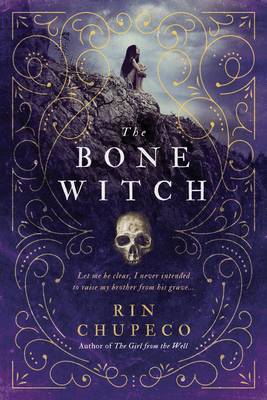Reviewed by kimbacaffeinate on
The stories from the past, share Tea's begins as she resurrects her brother from the dead graveside, meets the Bone Witch who will be her mentor. Time in the present with the bard had me craving the why and how from the past.
Chupeco described the world vividly, and while at times it made the story cumbersome I enjoyed her prose, descriptions and the depth these details created. The reader will easily be able to envision the streets of each kingdom, the colorfully and richly detailed huas worn by the Asha (magic-wielders) and the heart encased jewelry everyone wears around their necks. We get a clear understanding of the magic in this world and the different types of Asha, warriors, and hierarchy. Women hold the most scared of roles, but men still rule kingdoms. While the Bone Witch is perhaps the strongest of the Asha, she is also the most feared. You will find a multitude of influences here from the huas which resembled the Japanese geisha to the castles and social structure as well as the elemental magics of earth, the wind, water, and fire.
This world is full of good, evil and supernatural creatures created during the dark ages of magic known as Daeva. Necromancy, arranged marriages, favors, and court politicking abound. We only visit a few villages, but the maps and talk of the kingdoms helped create a sense of the world. Most of the story is spent during Tea's training to be an Asha. Some of the customs are silly, and a lot of attention to detail was provided. Sadly, this didn't allow for a lot of action scenes. At times these tidbits about everything from hair accessories to food weighed the tale down. I think this caused a lot of readers to abandoned ship, but I encourage you to hang in there. There are some fantastic scenes where Tea battles Daeva and makes startling discoveries.
As I said the tale doesn't have a lot of action or movement, but the characters are rich. The Tea from the present speaking to the Bard is confident, and perhaps a little jaded and the Tea from the past is inquisitive, eager to learn, stubborn and caring. It was fascinating seeing her grow and feeling her change as she became less naive. Of course, there is a lot more to learn. We don't yet know what events triggered her present situation. I adored her brother and found myself intrigued by the prince and his brothers. The head Asha who agrees to Tea's training is a snarky old coot and had me laughing a time or too. I enjoyed her mentor and the sisters who took on her training. A young boy who wants to be Asha and participate in the ceremonial dances added interest and showed our heroine' apt skills and heroism.
While at times the storyline dragged and admittedly forced me to read this in smaller doses, the writing, characters and overall story arc have me craving the next book. Fans of THE NAME OF THE WIND will enjoy this story.
Copy provided by publisher. This review was originally posted at Caffeinated Book Reviewer
Reading updates
- Started reading
- 12 February, 2017: Finished reading
- 12 February, 2017: Reviewed
